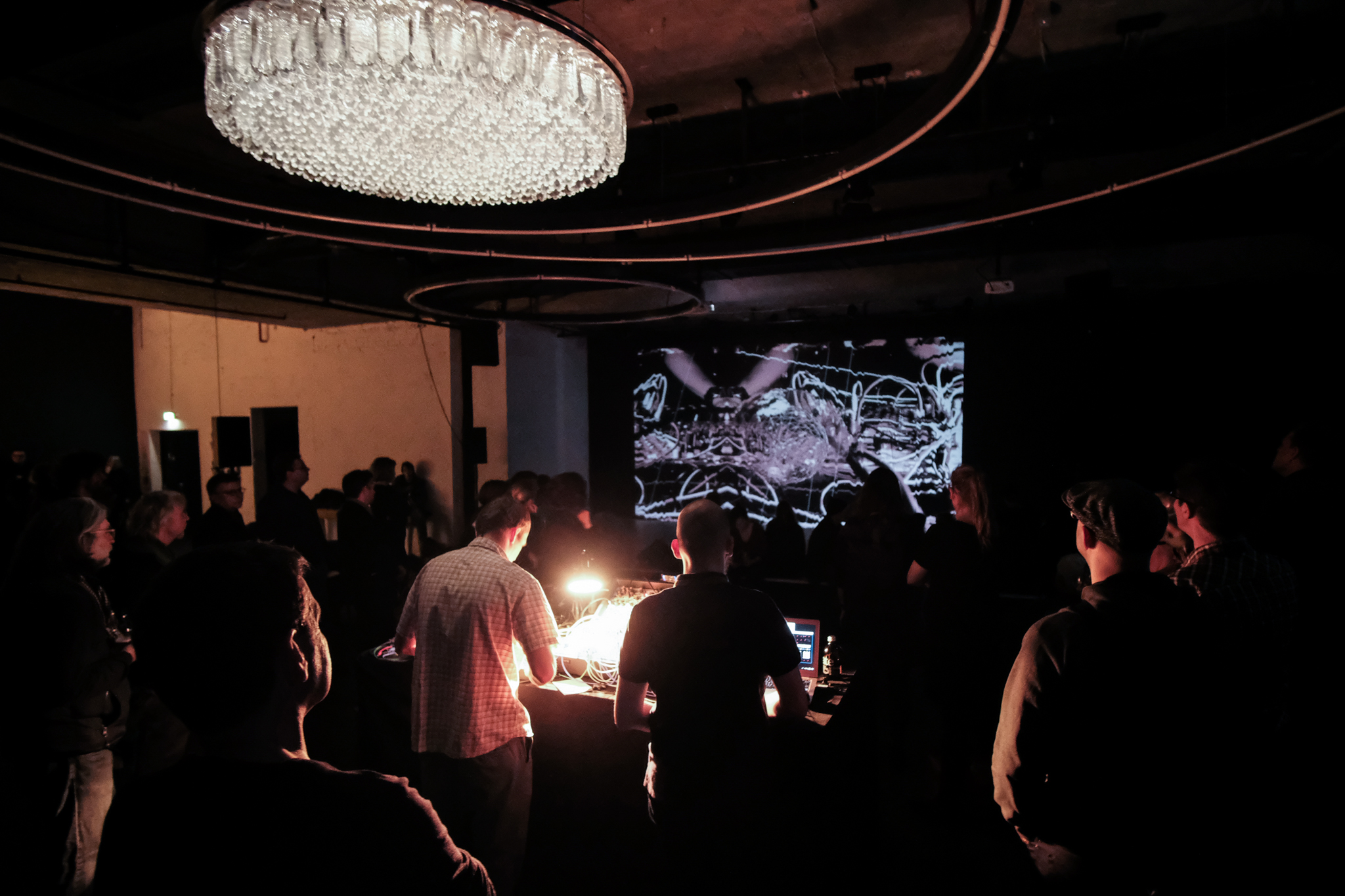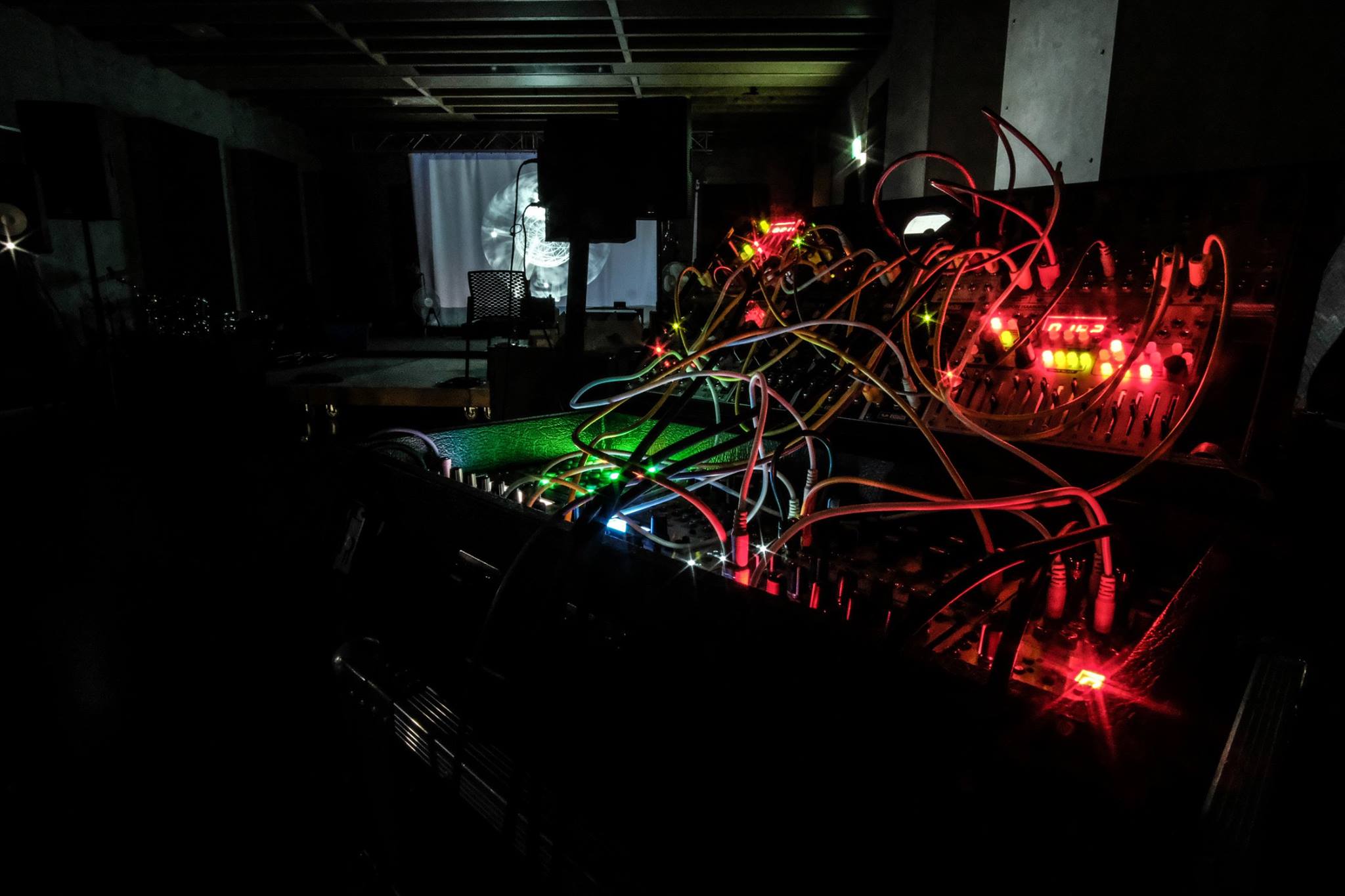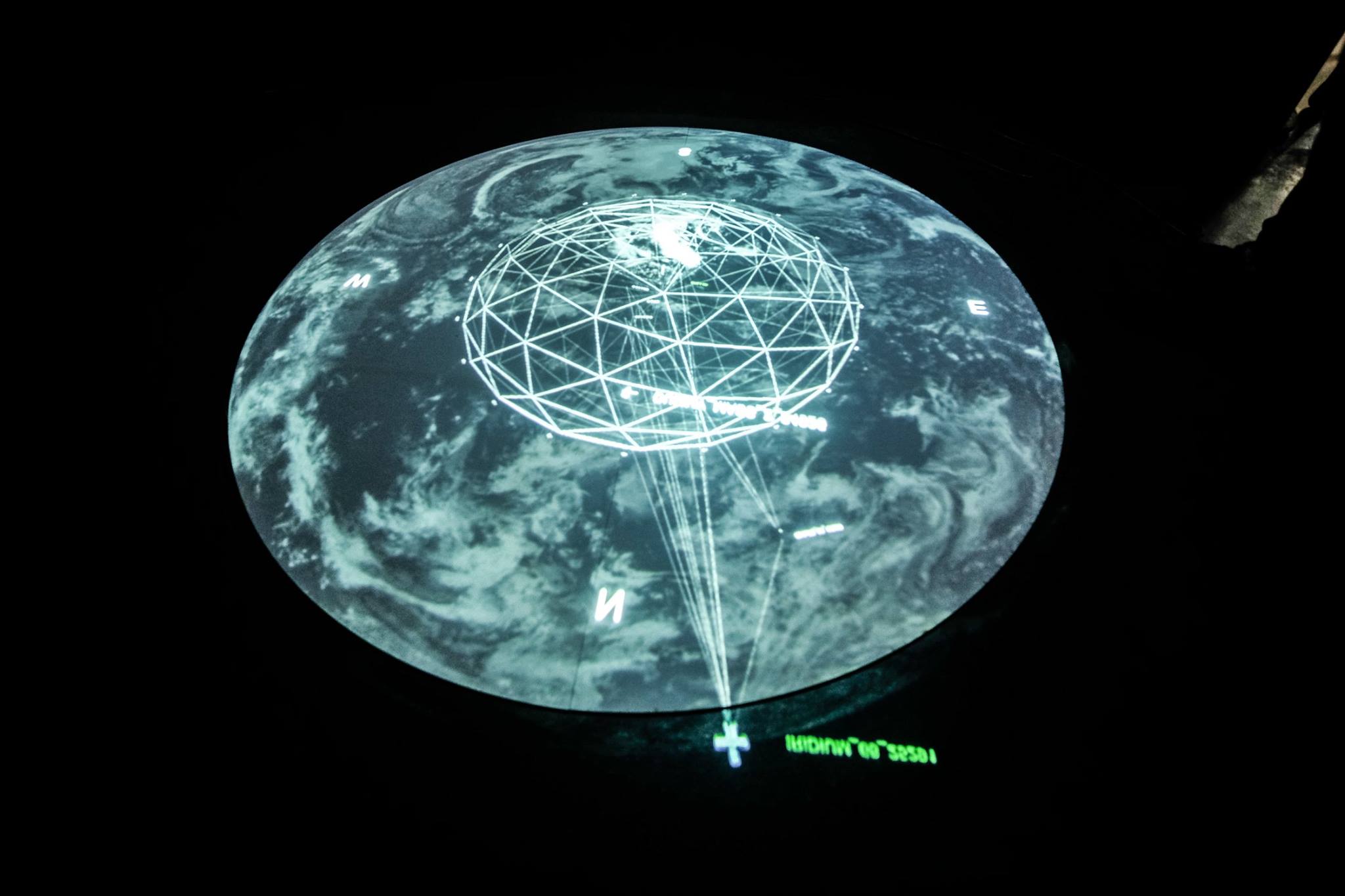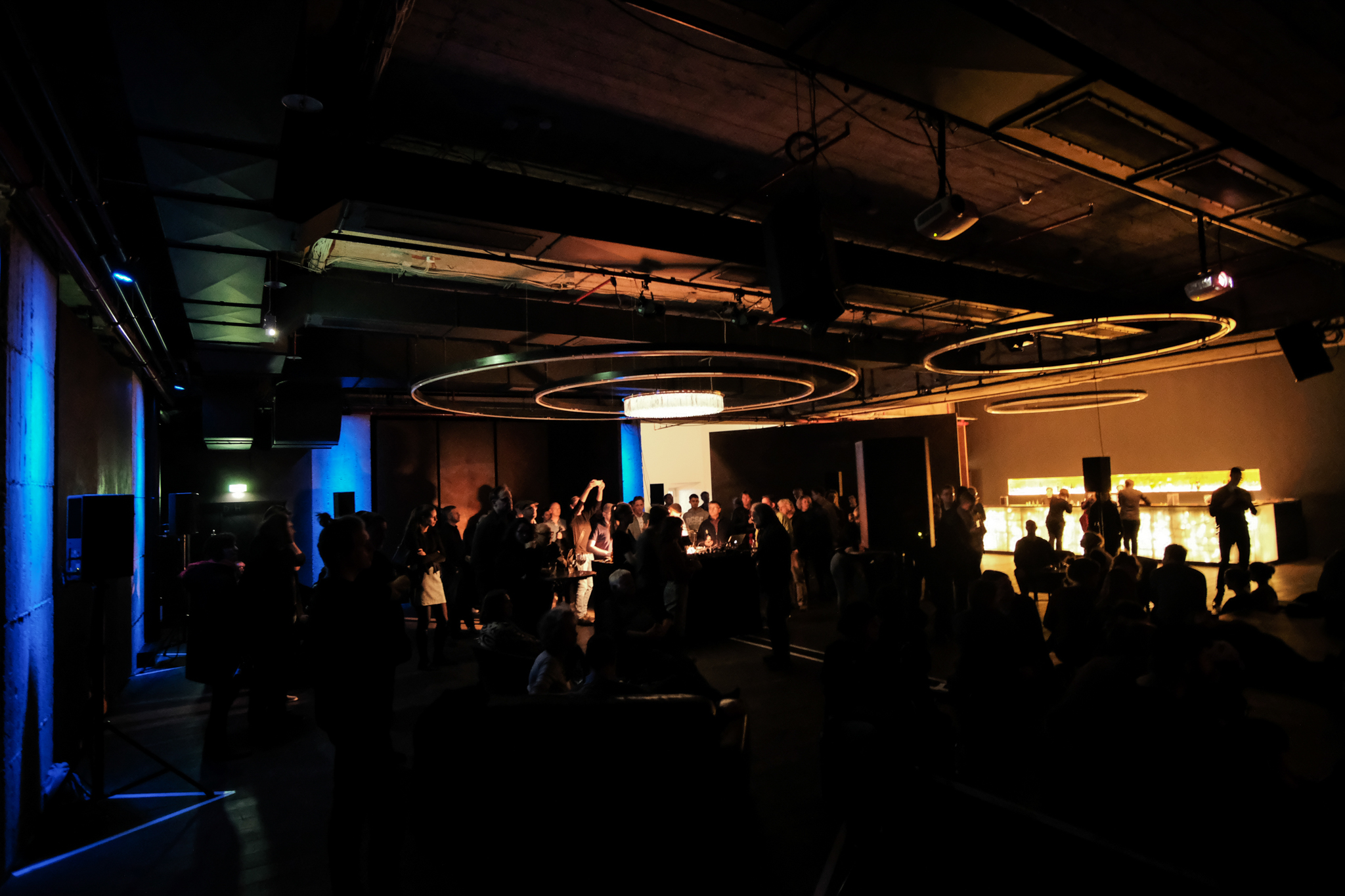The installation is using 10 objects with computed relative positions with respect to geographic location of the site it is presented. During the period of 21 March 19:00-23:00 NZDT, 2018. Piece was showcased on New Frontiers conference (New Zealand, 2018) using Wellington coordinates provided by the U.S. Air Force. These are presented in space on eight speaker array using spatial sonification and visualisation of trajectories and size of the objects.
Immersive audiovisual performance uses 8.1 sound system and utilises the data to position the sound in the room. Sounds of Space Debris are generated with modular synthesiser and panned using Max/MSP and IRCAM’s SPAT extension for sound spatialisation. Piece is semi generative and different each time due to the use of data, patch and modules used in the system. Concert was premiered in Resonanzraum, Hamburg at ePhil concert series (Nov, 2018).
Team:
Jakub Hader – visual design
Radek Rudnicki – sound design
Eric Dahlstrom, Emeline Paat-Dahlstrom – scientific advice
Project is part of Interplay and is supported and co-funded via research funding grant by College of Creative Arts at Massey University, Wellington, New Zealand.
See blow pictures from concert in Resonanzraum, Hamburg, preparation of the installation and the installation itself.




